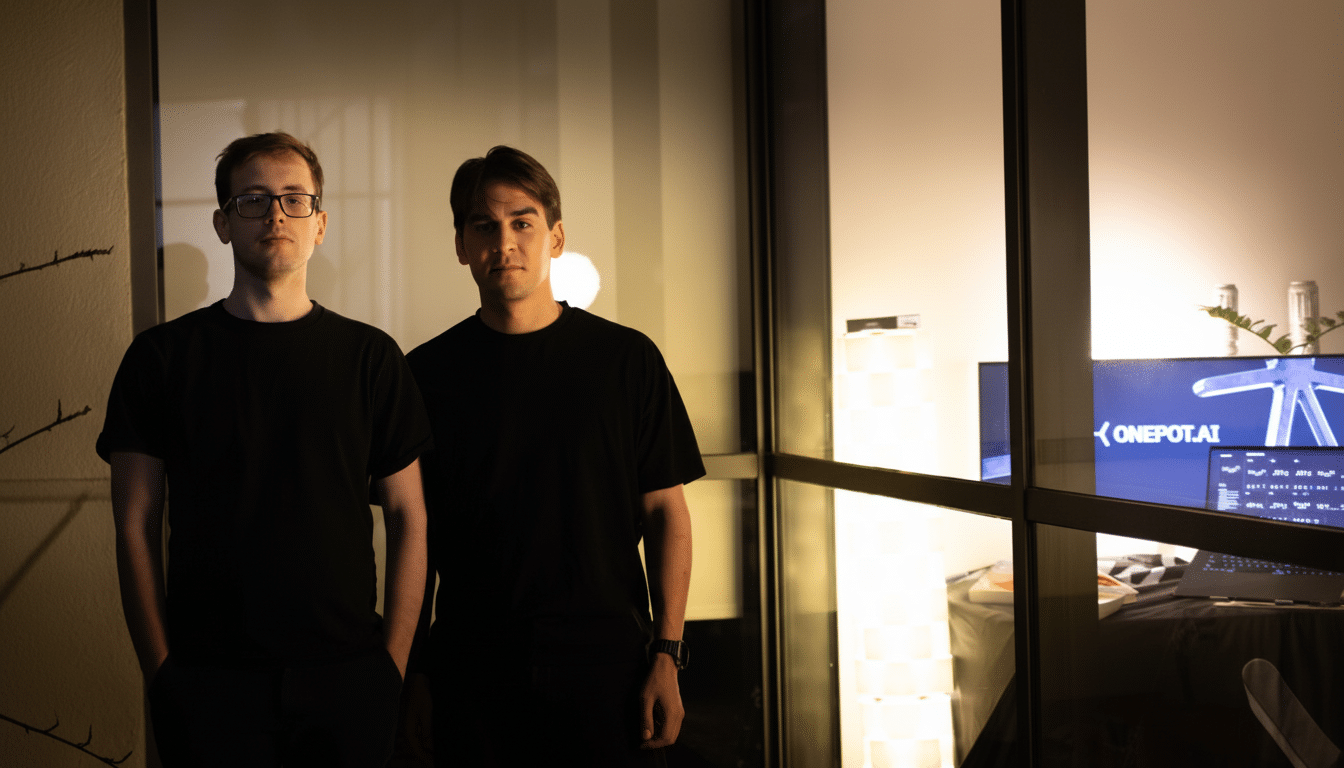Onepot AI has closed a $13 million round to accelerate small-molecule synthesis. Its AI-driven labs will enable a faster and more reproducible way of turning chemical ideas into physical drug prototypes. The round, which included pre-seed funding, was led by Fifty Years and supported by Khosla Ventures, Speedinvest, OpenAI co-founder Wojciech Zaremba, and Google Chief Scientist Jeff Dean. The company is set to double the size of its operations, launching a second lab in San Francisco. It plans to focus on scaling its on-demand compound synthesis offering for biotech and pharma clients.
Targeting chemistry’s slowest step in molecule development
Even with breakthroughs in AI-driven molecule design, the rate-limiting factor of the sector is molecule development. Medicinal chemists require weeks to modify a single scaffold, and projects may grind to a halt not because their concepts are poor, but because their execution is difficult, the compounds are fickle, or the data are disorganized. Grand View Research’s analysts value the global contract research industry at over $80 billion in 2023, yet synthesis throughput inhibits discovery.

Onepot’s founders, Daniil Boiko and Andrei Tyrin, seem convinced that compressing synthesis from months to days is the most impactful opportunity to gain time over hit-to-lead and specification optimization cycles; that adds to the tradition of “self-driving labs,” which link design, make, test, and learn. This approach was pioneered in academic projects such as ASKCOS at MIT and IBM’s RXN but has only been lightly implemented on a commercial scale.
Inside Onepot’s AI-first small-molecule synthesis engine
Onepot is operated by the POT-1, a custom-built small-molecule synthesis machine that records fine-grained experimental context—what temperatures were used, which reagents were entered, in what order and at what time, or when they transitioned to different physical states—and appends the process metadata so that it can be reproduced and audited.
Running atop this lab is “Phil,” a machine-learning organic chemist that suggests and refines reaction protocols using both literature-informed priors and Onepot’s expanding corpus of in-house experimental results.
Crucially, the system has been trained on more than just text-mined papers or patents, since such datasets can be biased toward successful, well-behaved reactions; in this work, it includes real-world runs from POT-1. That feedback loop helps the models learn edge cases, solvent quirks, and route failures that rarely end up in journals. The result is an ecosystem that can plan, execute, and iterate synthesis with negligible human micromanagement and full traceability.
The catalog model with measurable throughput
On the commercial side, Onepot maintains a collection of compounds that it can synthesize upon request. Customers choose their targets; Onepot does the route-planning and execution, and then ships physical material as dry solids or solutions in plates or vials. Rather than hiring internal chemistry teams or queuing with others internationally, sponsors gain expedited entry to quality compounds for screening, ADME, and tox assays.

The company’s aim is to reduce the time it takes to develop new analogs from weeks to days and increase success rates through data-rich execution. A domestic, AI-orchestrated lab also lessens exposure to brittle global supply chains, the founders say—a vulnerability underscored during pandemic-era shortages and continued trade tensions. More rapid, closer, and more reproducible synthetic practice can be as much a resilience strategy as it is a speed play.
Competition and differentiation in AI-driven synthesis
In terms of a direct benchmark, Onepot’s closest analogues are synthesis powerhouses like WuXi AppTec and Enamine, both of which boast giant catalogs and deep process expertise. Where Onepot hopes to make a difference is in developing a closed-loop, AI-native pipeline that constantly learns from its own experimental data, as opposed to optimizing simply for scale. If the platform can turn difficult runs into safe, standardized protocols, then it might expand the feasible design space for medicinal chemistry programs.
Investors have flocked to this thesis across the sector: Deloitte and IQVIA themselves have both pointed out how cycle time in hit-to-lead and lead optimization fuels downstream R&D productivity. Even a slight cutback in development turnaround can ripple through portfolio economics. Onepot’s public benchmark is to accelerate discovery at least 2x—ambitious, but on a par with the step-change customers look for when they transition to AI-native tooling.
What comes next for Onepot’s automated synthesis push
The new money will go toward a second lab in San Francisco, growth of the compound discovery engine, and scaling catalog breadth. Metrics to watch include time-to-ship for new analogs, cost per successful synthesis, and reproducibility across sites—the numbers that will determine if AI chemistry can transition from promising demos to reliable infrastructure.
If Onepot does manage to drive rapid, repeatable synthesis across a wide variety of scaffolds, it won’t just accelerate drug discovery. It might even orthodoxify, if that’s a word, “weird” chemistry that league-of-nations-type teams shy away from now and provide candidates that were once always viewed as too difficult to make. In a field where access to material still sets the pace of learning, that change could be the difference between another incremental program and a first attempt at a truly new class of medicines.

